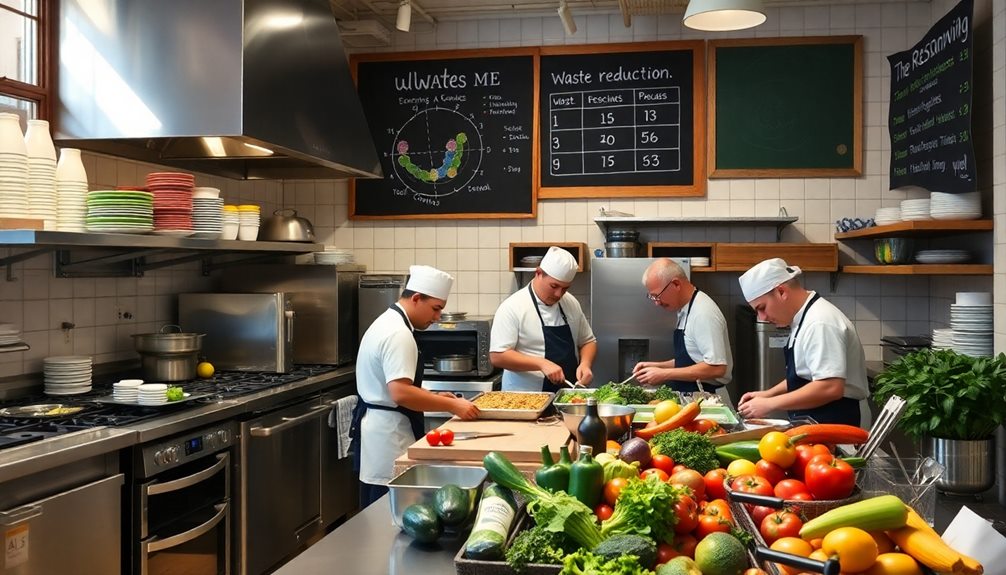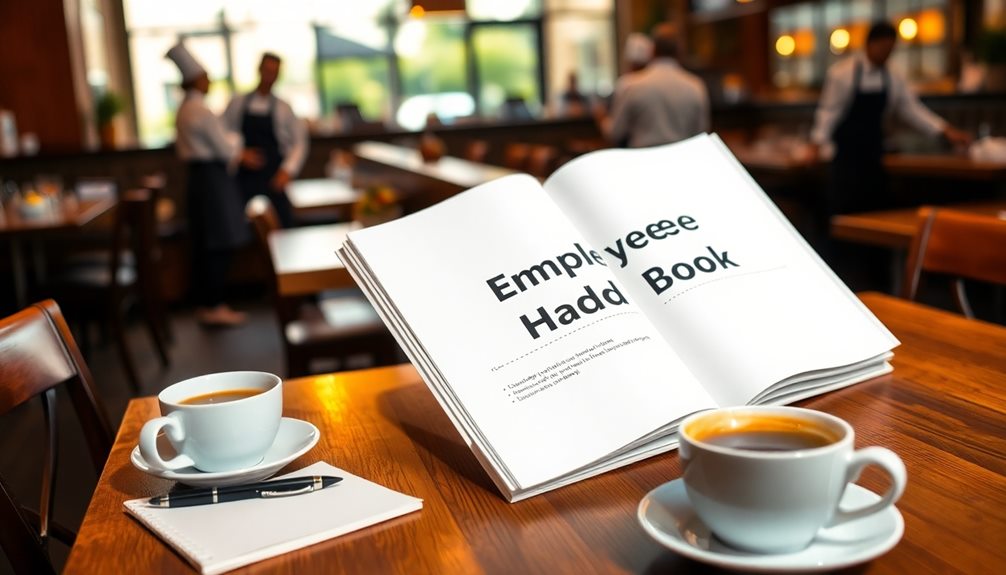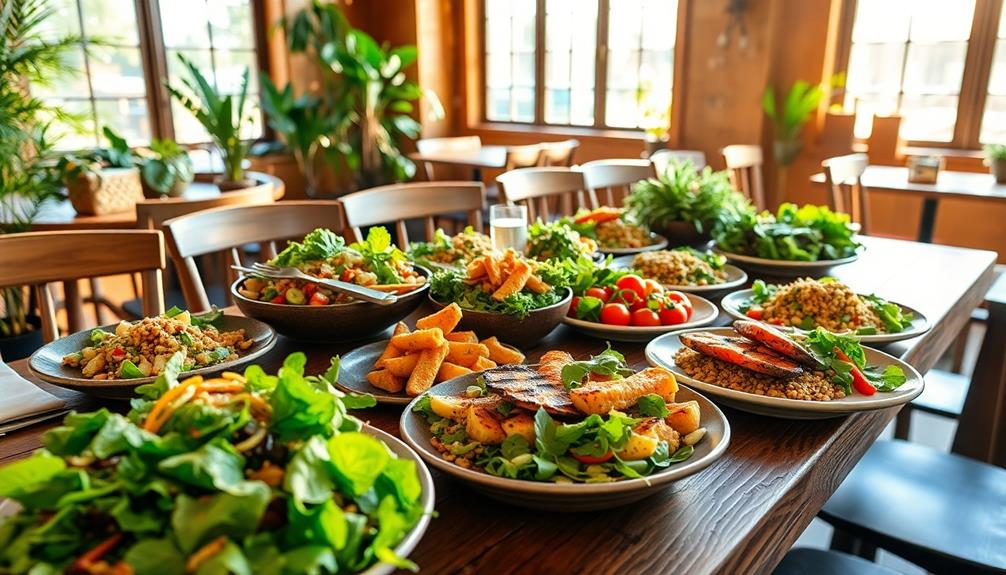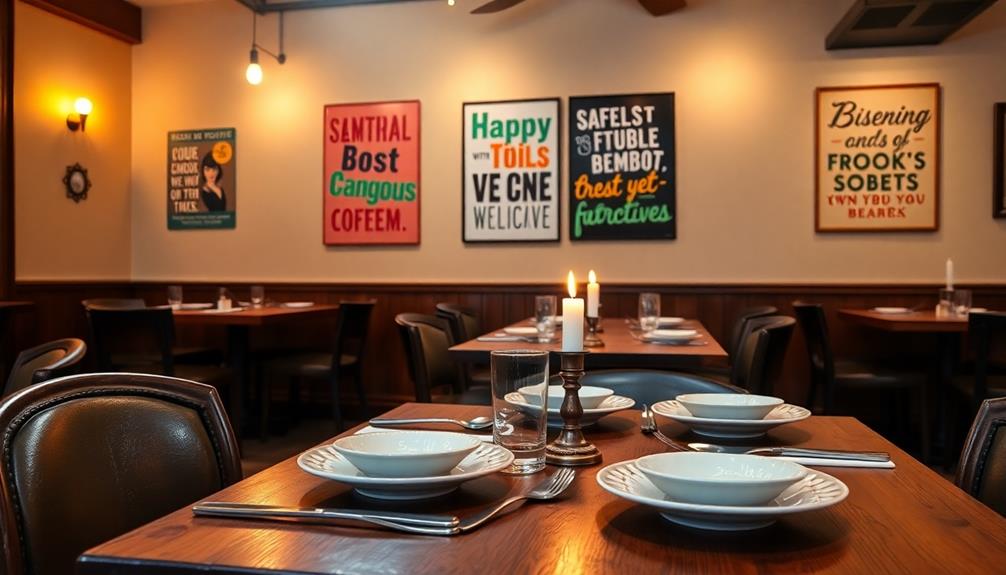Reducing operating costs in your restaurant can greatly boost your bottom line. Start by analyzing your labor and food costs, aiming for a prime cost of 60-65%. Use FIFO inventory methods to cut waste and spoilage, and streamline your menu by removing low-profit items. Build strong supplier relationships to negotiate better prices and consider bulk orders. Implement energy-efficient appliances to lower utility expenses. Automate payroll to reduce administrative burdens. These strategies can help maximize efficiency and improve profitability. With a few adjustments, you can make a noticeable difference, and there's more to explore to enhance your cost-saving efforts.
Key Takeaways
- Implement FIFO inventory management to minimize spoilage and reduce food waste, directly impacting food cost efficiency.
- Optimize labor costs by using historical sales data for scheduling and cross-training staff for flexibility.
- Streamline the menu by removing low-profit items to enhance food cost management and improve overall profitability.
- Invest in energy-efficient appliances and LED lighting to significantly lower utility costs and conserve energy.
- Automate payroll and inventory tracking to reduce administrative costs, minimize errors, and improve operational efficiency.
Understanding Operating Costs
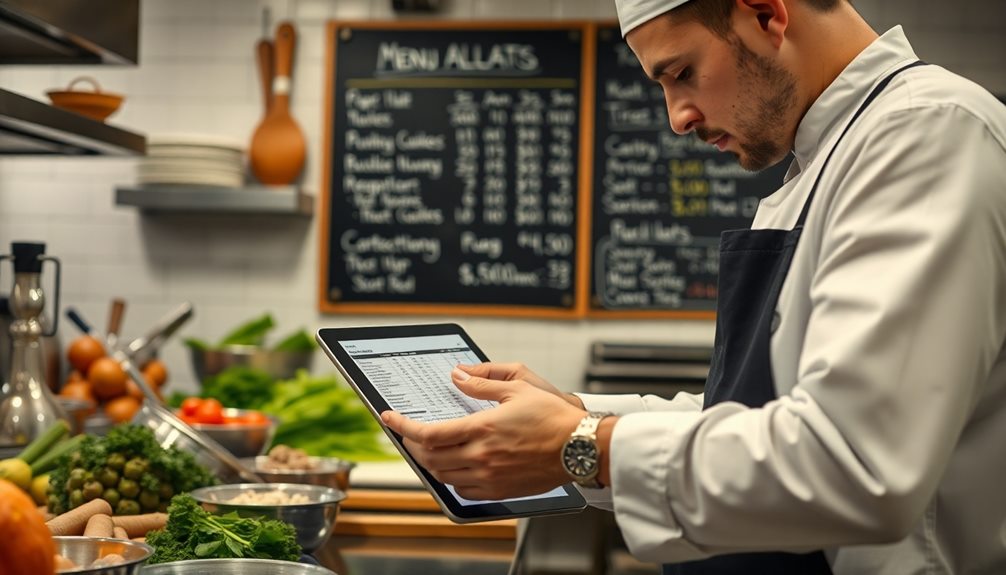
When it comes to running a successful restaurant, understanding operating costs is fundamental. These costs include fixed expenses like rent and utilities, which stay stable month-to-month, and variable costs such as food and labor, which fluctuate based on your business activity.
Accurately categorizing these expenses is essential for effective budgeting and maintaining profitability in the competitive restaurant industry.
Labor costs typically account for about 30% of your total operating costs, while food costs can range from 20% to 40%. Keeping a close eye on these major components can greatly impact your bottom line.
The prime cost, which combines the cost of goods sold (CoGS) and total labor costs, is a key metric for evaluating your operational efficiency; ideally, you should aim for a prime cost percentage of 60-65%.
Implementing efficient inventory management practices is also critical. Regularly reviewing and analyzing your operating costs allows you to identify problem areas and make informed decisions.
Food Cost Management
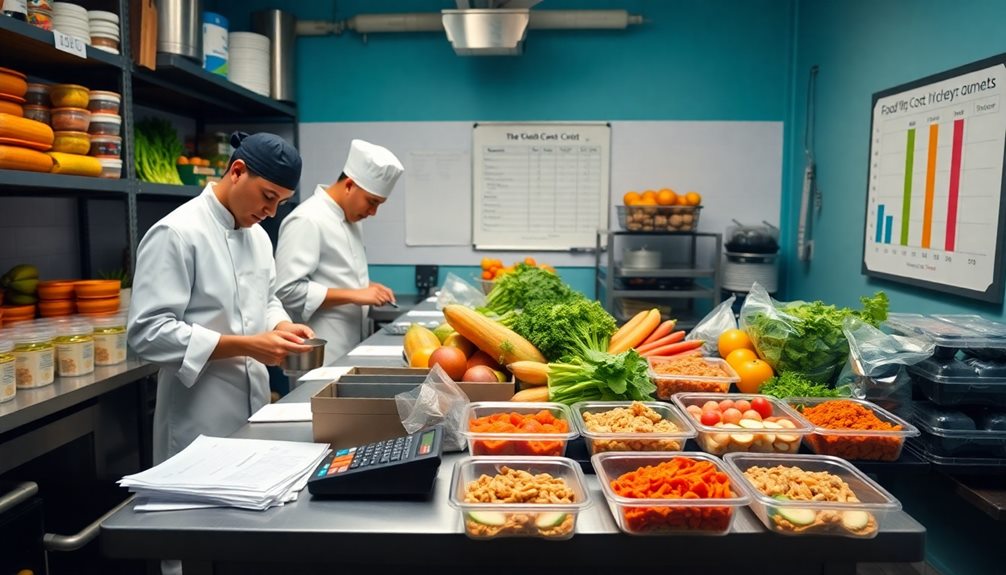
Effective food cost management is a key component of controlling your overall operating expenses. Start by calculating your food cost percentage, which you can find by dividing the total cost of ingredients by the menu item price. Aim for an ideal range of 15-30% to maintain profitability.
Implement effective inventory management practices, like the First In First Out (FIFO) method, to minimize spoilage and reduce food waste. This guarantees older stock is used before newer stock.
Regularly analyze customer plate waste and feedback to adjust portion sizes appropriately. Doing so can help reduce excess food waste while simultaneously improving customer satisfaction.
Streamlining your menu is another essential step; eliminate high-cost, low-profit items and focus on dishes that are popular and align with customer preferences. This menu enhancement can greatly improve overall food costs.
While building strong supplier relationships is critical for long-term success, focus on negotiating pricing with your current suppliers to get the best deals possible.
Supplier Relationships

Strong supplier relationships are essential for managing your restaurant's operating costs. By building strong connections with a limited number of reliable suppliers, you can secure better pricing and access to bulk discounts, which ultimately reduces your overall food costs.
Establishing long-term contracts locks in lower ingredient prices, shielding you from market fluctuations and allowing for more predictable budgeting. Additionally, exploring options for creating a retirement savings plan can help guarantee your personal finances remain stable as your business grows.
To maximize your savings, regularly evaluate supplier performance and communicate openly about pricing. This transparency helps you negotiate better deals and guarantees you're not overpaying for ingredients.
Additionally, consolidating orders with fewer suppliers minimizes delivery fees and enhances your leverage for discounts, as larger orders typically yield better pricing.
Collaborating with local suppliers can greatly reduce transportation costs while promoting sustainability. By sourcing fresh ingredients from nearby farms, you not only cut down on shipping expenses but also enhance your menu appeal with high-quality, seasonal options.
Ultimately, fostering strong supplier relationships empowers you to streamline operations and optimize your restaurant's profitability.
Inventory Control
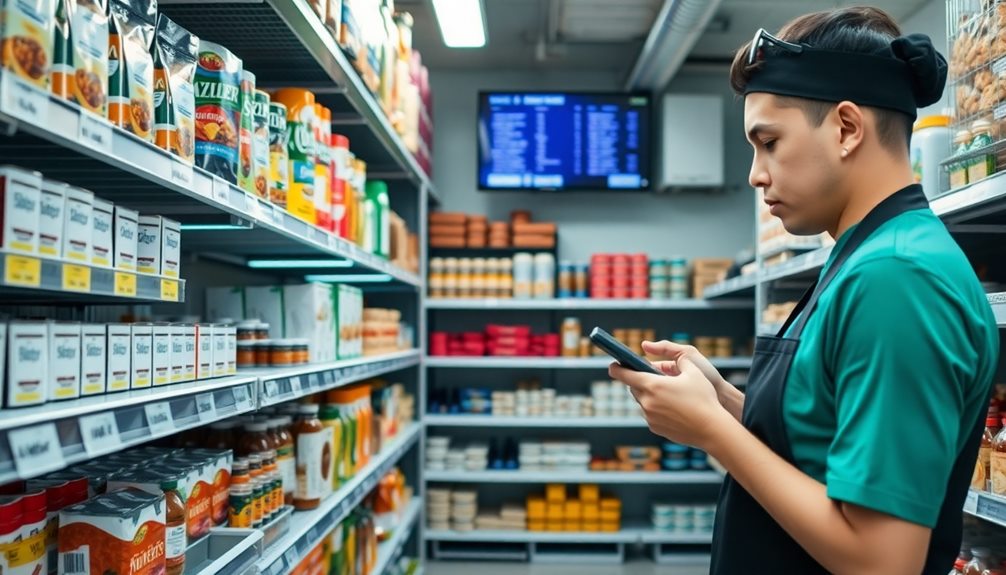
Building on solid supplier relationships, effective inventory control is vital for minimizing operating costs in your restaurant. Implementing inventory management software can greatly reduce food waste by tracking expiration dates and guaranteeing timely use of ingredients.
Since 58% of restaurateurs struggle with inventory management, this software can be a game changer for avoiding excess food waste.
Conducting daily inventory audits helps you identify discrepancies and maintain accuracy, allowing you to adjust orders based on actual usage. Utilizing the First In, First Out (FIFO) method guarantees that older stock is used before newer stock, reducing spoilage and waste while keeping your inventory fresh.
Regularly analyzing purchasing trends enables you to optimize stock levels, saving costs by ordering only what you need and preventing unnecessary excess.
Additionally, training staff on proper inventory handling and storage techniques is essential. This training helps maintain the integrity of food items and minimizes losses due to mishandling or spoilage.
Waste Reduction Strategies
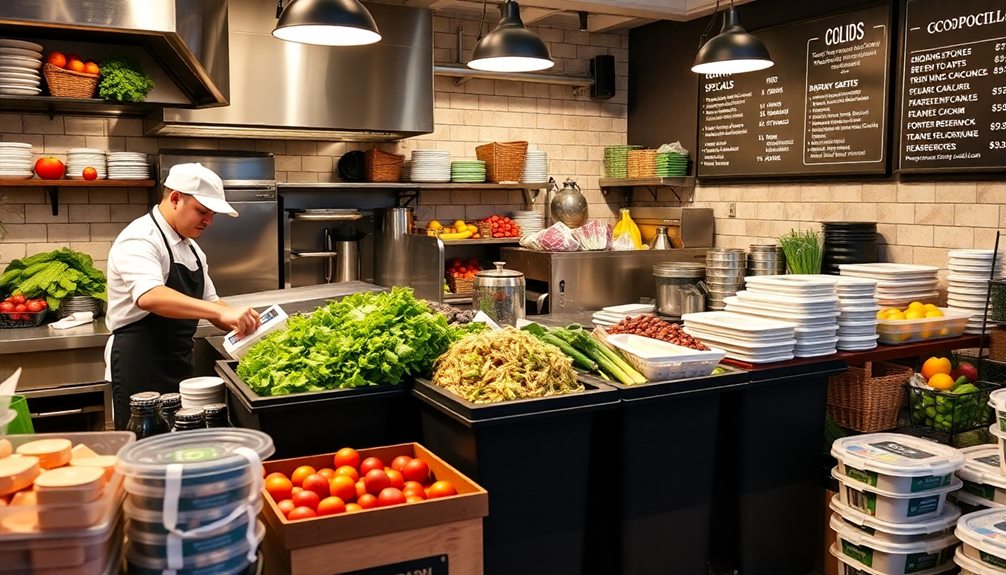
Waste reduction isn't just a trend; it's a necessity for restaurants aiming to cut operating costs and boost sustainability. By implementing creative repurposing of food scraps, like using vegetable peels for stocks or sauces, you can greatly minimize waste while enhancing your dishes.
Additionally, staying informed about personal debt forgiveness bills can help you manage your financial obligations more effectively. Monitoring food waste metrics helps you identify over-portioning issues, allowing you to adjust portion sizes based on customer feedback and consumption patterns.
Train your staff on proper inventory handling techniques, including the First In First Out (FIFO) method. This practice guarantees that older products are used first, reducing spoilage and waste.
Additionally, consider composting your organic waste. Not only does this divert food scraps from landfills, but it also provides nutrient-rich soil for local farms, fostering community ties and sustainability.
Encouraging customers to take leftovers home can further enhance customer satisfaction. Offering appropriate packaging makes it easy for them to enjoy your meals later, reducing plate waste and maximizing each meal's value.
Optimizing Labor Costs
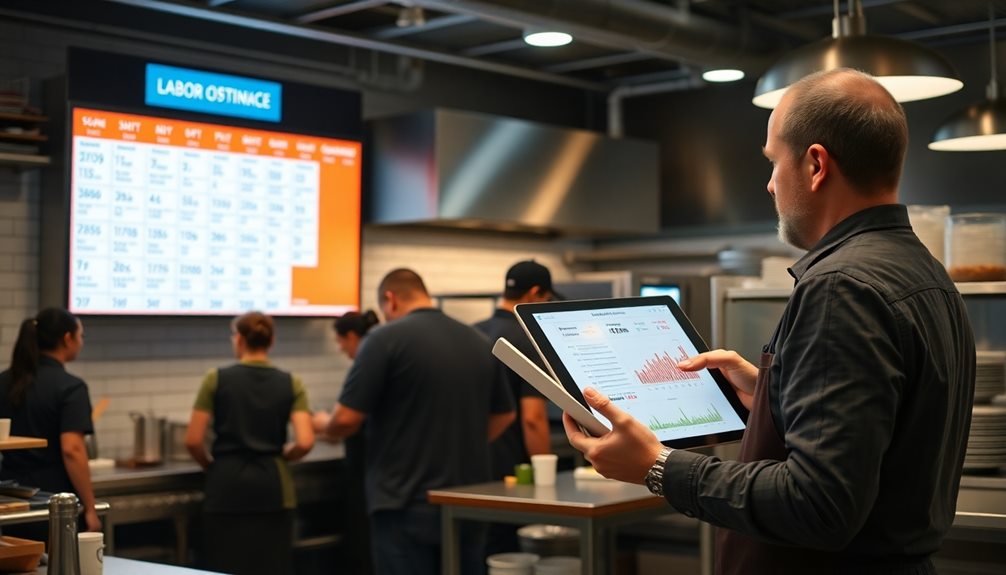
To maintain profitability, optimizing labor costs is fundamental for your restaurant's success. Labor costs typically account for about 30% of your total operating costs, so managing them efficiently is essential.
Start by using historical sales data to inform your scheduling practices. This approach helps you avoid overstaffing during slow periods, greatly reducing unnecessary labor expenses.
Implementing cross-training for your staff can also enhance flexibility during shifts. When employees can take on multiple roles, you can reduce labor costs by minimizing the need for additional hires.
Furthermore, investing in extensive training programs boosts efficiency and reduces errors, which ultimately leads to lower labor costs over time.
Regularly monitor your labor cost percentage, which averages around 31.6% in the industry, to identify trends and make timely adjustments to your staffing practices.
Remember, maintaining employee morale is crucial. Happy employees are more productive and less likely to leave, which saves you money on turnover.
Utility Cost Savings
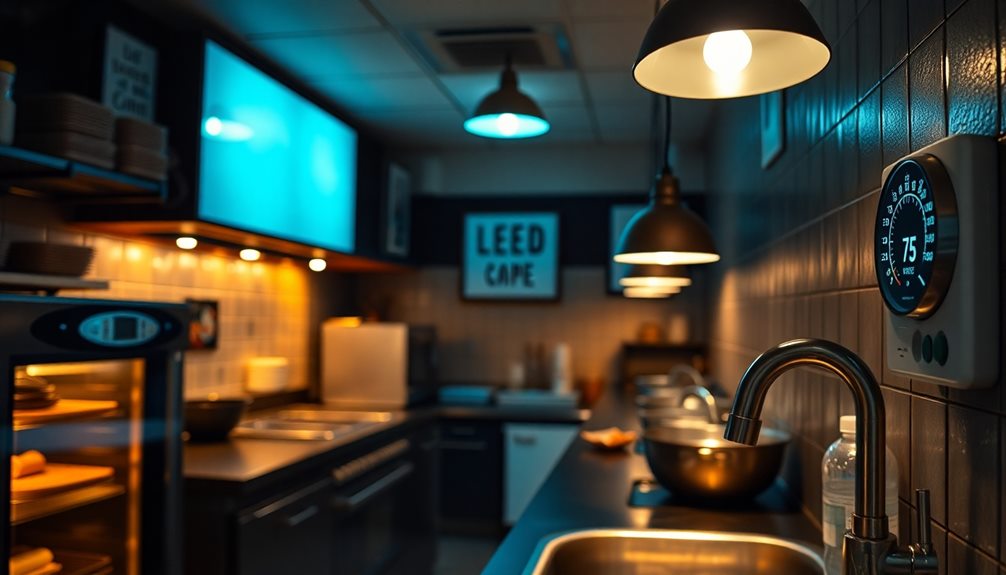
Your restaurant's utility costs can greatly impact your bottom line, making it essential to implement strategies for savings. Start by switching to LED lighting, which can reduce energy consumption by up to 75%. This change can considerably lower your utility costs over time.
Additionally, consider installing energy-efficient appliances that can cut energy usage by 50% compared to standard models. Implementing smart thermostats can also help you save on heating and cooling costs, potentially reducing these expenses by 10-30%.
Regular maintenance of your HVAC systems and kitchen equipment is vital, as it can improve efficiency and help reduce costs by up to 20% through optimized performance.
Don't forget the importance of monitoring utility bills. Keeping an eye out for anomalies allows you to make small adjustments, like turning off unused lights and appliances, leading to substantial monthly savings.
Technology for Efficiency
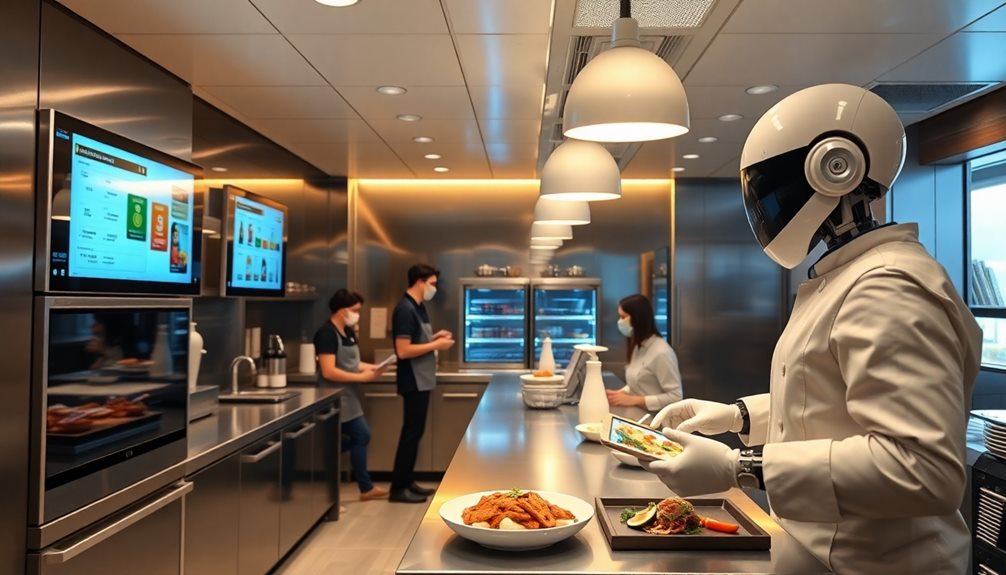
Embracing technology can markedly enhance efficiency in your restaurant operations. Implementing restaurant management software can streamline your processes by automating inventory tracking, which can reduce labor costs by up to 30%.
With an EPOS system, you gain access to real-time data analytics, allowing you to monitor sales trends and adjust inventory orders accordingly. This helps prevent waste and overstocking, ultimately reducing your operating costs.
Transitioning to digital financial management tools enhances accuracy when tracking expenses and revenues. This leads to better budgeting and financial forecasting, improving your overall profitability.
Additionally, integrating online ordering systems can facilitate takeout and delivery services, providing a revenue boost of up to 20%.
Moreover, automating payroll processes with digital solutions not only reduces administrative costs but also minimizes human errors. This contributes to lower labor costs and improves employee satisfaction through timely payments.
Frequently Asked Questions
How to Decrease Cost in a Restaurant?
To decrease costs in your restaurant, collaborate with suppliers for better rates, manage inventory effectively, optimize labor schedules, review your menu regularly, and invest in energy-efficient appliances. These steps can substantially lower expenses.
How Can You Reduce Operating Costs?
You can reduce operating costs by analyzing your expenses, negotiating with suppliers, optimizing staff schedules, and adopting energy-efficient practices. Streamlining operations and minimizing waste will help you boost profitability while maintaining quality service.
How to Control Labor Costs in a Restaurant?
To control labor costs in your restaurant, track your labor percentage closely, implement smart scheduling based on sales trends, cross-train employees, and regularly review performance to enhance efficiency and reduce unnecessary expenses.
What Is the Biggest Expense for a Restaurant?
You'll find that labor costs are often the biggest expense for a restaurant, typically ranging from 30% to 36% of total sales. Managing these costs effectively is essential for your restaurant's financial health.
Conclusion
By implementing these strategies, you can effectively reduce your restaurant's operating costs and boost your bottom line. Imagine the freedom of running a leaner business, where every dollar works harder for you. Embrace food cost management, streamline your supplier relationships, and harness technology to enhance efficiency. As you take control of your expenses, you'll not only improve profitability but also create a sustainable future for your restaurant. The time to act is now—your success awaits!
